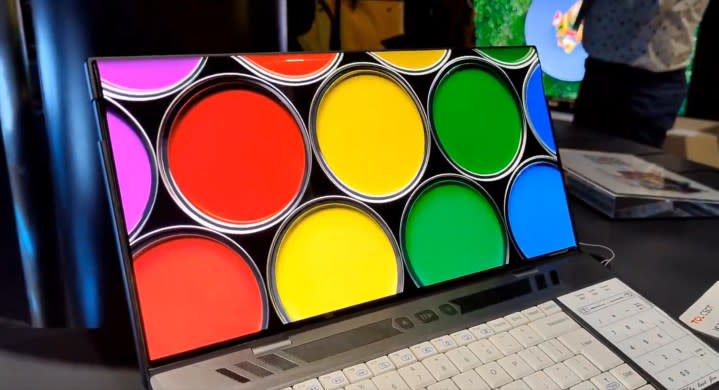OLED monitors just had a major breakthrough

There’s some hubbub in the world of display tech right now over Tandem OLED. If you missed Apple’s announcement of the new iPad Pro, you’ve probably never heard of Tandem OLED, but it’s already making inroads into other devices. TCL, at Display Week 2024, showed off a slidable Tandem OLED display that could fit into a laptop, and it claims a brightness of more than 2,500 nits.
If you’ve caught our reviews of monitors like the LG UltraGear OLED 27, you’ll know that’s an insane level of brightness. And that all comes down to the Tandem OLED tech. Tandem OLED is so simple that it almost doesn’t seem real. In order to increase the historically low brightness of an OLED panel, you just stack two OLED panels on top of each other to combine their brightness. Simple.
It’s easy to understand, but Tandem OLED has been a nut display makers like Samsung have been trying to crack for a few years. With the iPad Pro now sporting the tech, display makers like TCL are debuting their own takes on Tandem OLED.
TCL CSOT is showing a "slideable" 14-inch 4K tandem OLED.#displayweek2024 pic.twitter.com/SjGWYUtE2J
— Guillaume Chansin (@GChansin) May 14, 2024
You can see the display in action above. It’s slidable, extending from a 12.6-inch shell to a full 14 inches. TCL showed this off in a highly portable laptop, which cuts the trackpad for a slimmer form. This is just a prototype to show off the display, but it’s not hard to imagine laptop brands will take cues from TCL if they decide to implement this design. According to TCL, this display can reduce the overall size of a laptop by about 35%.
The display itself is no slouch, either. As mentioned, TCL claims it can reach 2,500 nits of peak brightness, but it also packs a resolution of 3,840 x 2,400 and comes with a 120Hz refresh rate. Even more impressive, TCL claims its display reduces power consumption by 30% compared to normal OLED screens and extends the lifespan by more than 3.5 times. That’s good news for anyone worried about OLED burn-in.
Display Week, as you might expect, is a time for display makers to show off their cutting-edge tech, so it might be some time before we see TCL’s screen in a real device. It’s certainly an exciting step for OLED, however, tackling both brightness and burn-in with impressive results.

